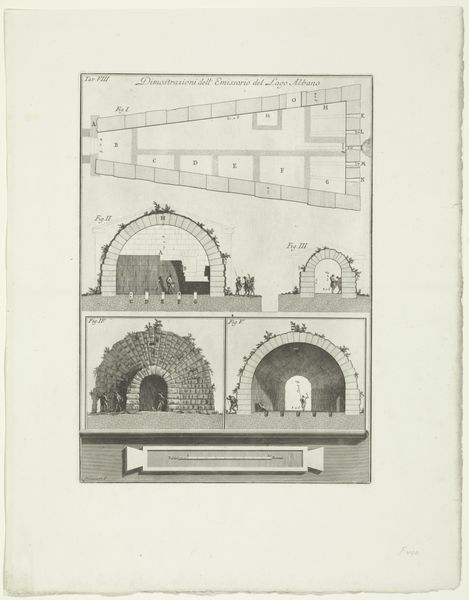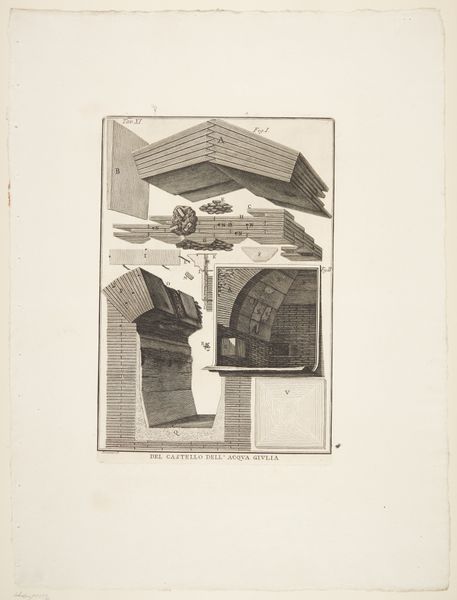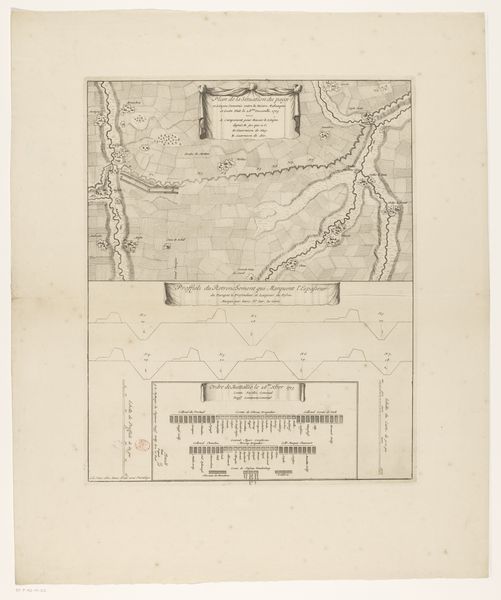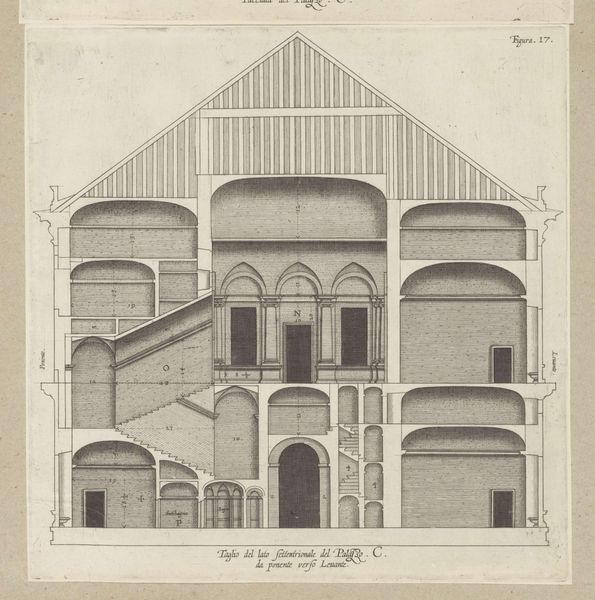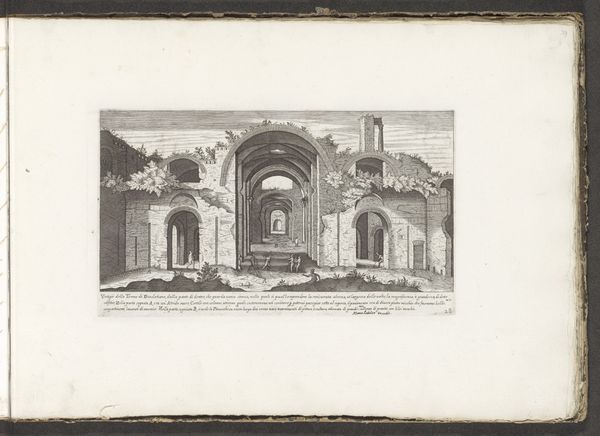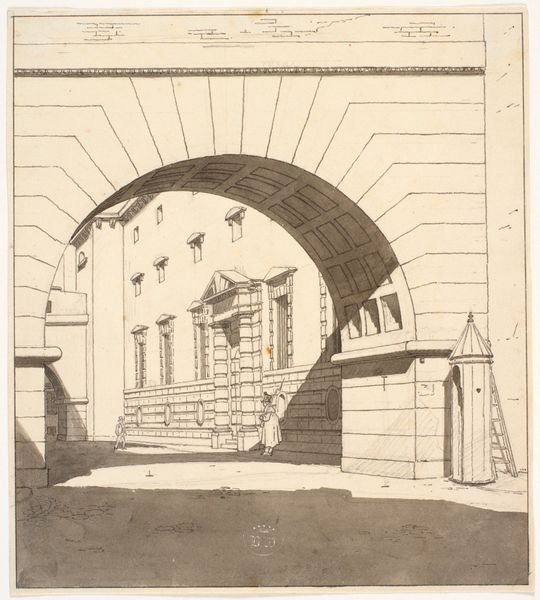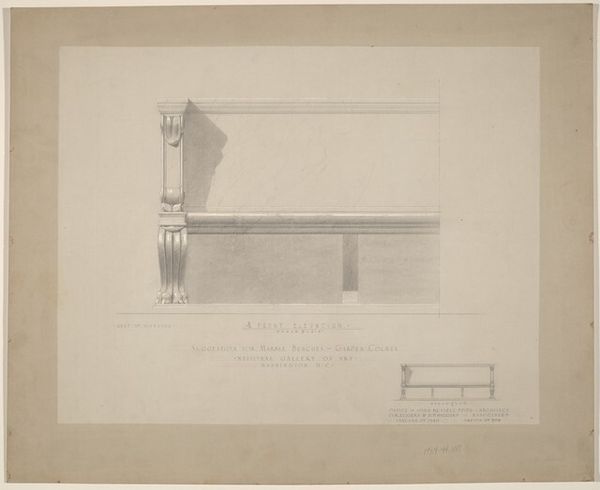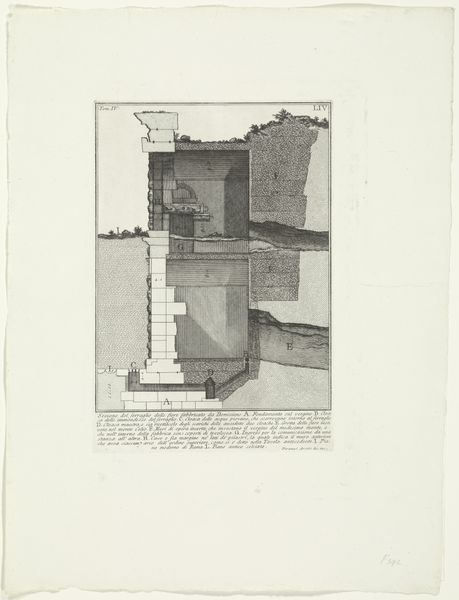
Restanten van een waterreservoir in de Albaanse Heuvels 1762
0:00
0:00
Dimensions: height 275 mm, width 409 mm
Copyright: Rijks Museum: Open Domain
Curator: Let's turn our attention to this engraving by Giovanni Battista Piranesi, "Restanten van een waterreservoir in de Albaanse Heuvels," created in 1762. It depicts, as the title suggests, the remnants of a water reservoir located in the Albanian hills. The piece employs etching techniques. Editor: You know, it looks like a secret diagram. A map to a forgotten underworld, maybe? There's something eerie and captivating about the stark precision coupled with the intimation of ruination. Like a memory fading at the edges. Curator: Precisely. Piranesi, as an artist deeply invested in the rhetoric of ruins, often explored the relationship between power, architecture, and the passage of time. Consider how the very choice of rendering these structures as ‘remnants’ implicates colonial narratives of the 18th century. Who built this reservoir, and what socio-political narratives are hinted by its current state of decay? Editor: I suppose it depends on how one feels about colonialism! I see beauty here! There is a lot to celebrate, from the clean, graceful lines of the architectural sketches, to the shading that captures the rough and coarse nature of nature and ruin. To me, Piranesi's view provides me the opportunity to meditate on nature's ability to retake spaces after they are left untended. I'd venture that many of today's problems would benefit from a similar philosophy, letting problems decay as naturally as nature takes back temples and civilizations. Curator: But isn't that aestheticization precisely the problem? By focusing solely on the beauty of decay, we risk overlooking the histories of oppression and exploitation embedded within these ruins. It invites us to ask critical questions about the legacies of power—to consider the unacknowledged costs hidden within images of desolation. Editor: Hmm, fair point. Still, there’s a melancholy beauty in that erasure, you have to admit. Alright, enough pondering the philosophical ramifications of overgrown ruins. I think I’m ready for the next exhibit, thank you for sharing. Curator: And thank you for joining me in the process!
Comments
No comments
Be the first to comment and join the conversation on the ultimate creative platform.
